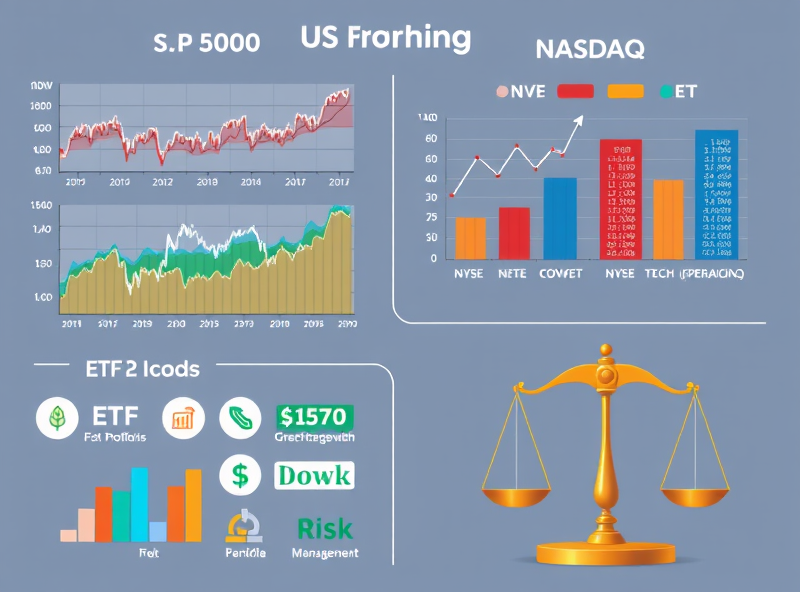Understanding the Basics of Derivatives

Derivatives are financial instruments that derive their value from an underlying asset, such as stocks, bonds, commodities, currencies, or even market indices. They are widely used in the financial world for purposes like hedging risks, speculating on price movements, or gaining access to assets or markets. While derivatives can seem complex at first, understanding their basics can help you make informed decisions about their potential use in your financial strategy.
There are four main types of derivatives: futures, options, forwards, and swaps. Each of these serves a unique purpose. For example, futures and options are often traded on exchanges and are standardized contracts, while forwards and swaps are typically customized and traded over-the-counter. Derivatives can be a powerful tool for managing risk. For instance, a farmer might use a futures contract to lock in the price of their crops ahead of harvest, protecting against price fluctuations. Similarly, investors might use options to hedge against potential losses in their portfolios.
However, it’s important to remember that derivatives are a double-edged sword. While they offer opportunities for risk management and profit, they also come with significant risks, such as leverage, counterparty risk, and market volatility. Therefore, understanding the fundamentals of derivatives is crucial before engaging with them. If you’re new to derivatives, consider consulting with a financial advisor or doing thorough research to ensure you’re making informed decisions. By gaining a solid understanding of these instruments, you can better navigate the complex world of finance and use derivatives effectively to achieve your financial goals.
Benefits of Derivative Investments

Derivative investments offer a range of benefits that can make them an attractive option for both individual and institutional investors. One of the primary advantages is risk management. Derivatives, such as options and futures, allow investors to hedge against potential losses in their portfolios by locking in prices or protecting against adverse market movements. For example, a farmer can use futures contracts to secure a stable price for their crops, regardless of future market fluctuations.
Another key benefit is leverage. Derivatives enable investors to control a large position with a relatively small amount of capital. This means that even a small price movement in the underlying asset can result in significant gains. However, it’s essential to use leverage cautiously, as it can amplify losses as well.
Additionally, derivatives contribute to market efficiency. By providing liquidity and enabling price discovery, they help markets function more smoothly. This is particularly beneficial for businesses and economies as a whole, as it allows for better resource allocation and planning.
Lastly, derivatives can be used for speculative purposes, offering opportunities for high returns. While this comes with increased risk, skilled investors can take advantage of market movements to generate substantial profits.
In summary, derivatives are powerful financial tools that offer flexibility, risk management, and potential for profit. However, they require a thorough understanding and careful strategy to maximize their benefits while minimizing risks.
Key Risks in Derivative Markets

Derivative investments can be a powerful tool for managing financial risks or enhancing returns, but they come with their own set of challenges. One of the primary risks is market risk, where the value of derivatives can fluctuate significantly due to changes in the underlying asset’s price. Another key concern is counterparty risk, which arises when the other party in the contract fails to fulfill their obligations. Additionally, derivatives often involve leverage, which can amplify both gains and losses, making them a double-edged sword. It’s also essential to consider liquidity risk, as some derivative contracts may be difficult to sell or exit without incurring significant costs. Understanding these risks is crucial for anyone venturing into the derivative markets, as it helps in making informed decisions and avoiding potential pitfalls.
Strategic Applications and Real-Life Examples

Derivative investments, while complex, can be incredibly powerful tools when used strategically. They allow investors to hedge against risks, speculate on market movements, and even enhance portfolio returns. For example, a company reliant on importing raw materials might use currency futures to protect itself from unfavorable exchange rate fluctuations. Similarly, an investor anticipating a stock price drop might use options to profit from the decline without directly shorting the stock.
Another real-life example is the use of interest rate swaps by corporations to manage debt costs. By swapping variable interest rates for fixed ones, companies can stabilize their financial obligations in a volatile interest rate environment. However, it’s important to note that these strategies require a deep understanding of the instruments and the risks involved.
For individual investors, exchange-traded funds (ETFs) that use derivatives can provide exposure to specific sectors or strategies, like commodities or leveraged returns, without the need to directly trade derivatives. This accessibility has opened doors for more people to benefit from derivatives while mitigating some of the complexity. By understanding these strategic applications, investors can unlock the potential of derivatives to achieve their financial goals while being mindful of the inherent risks.



